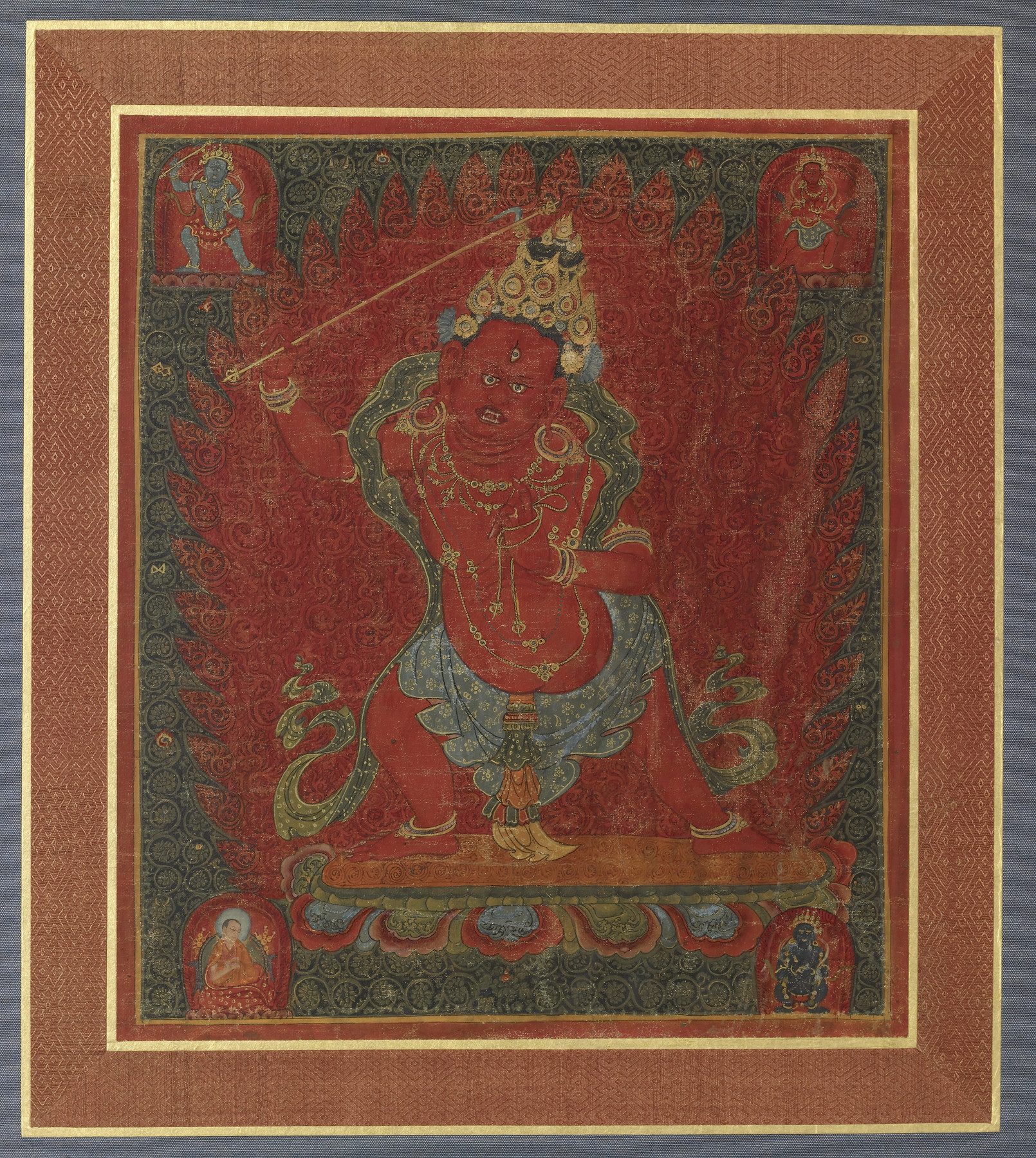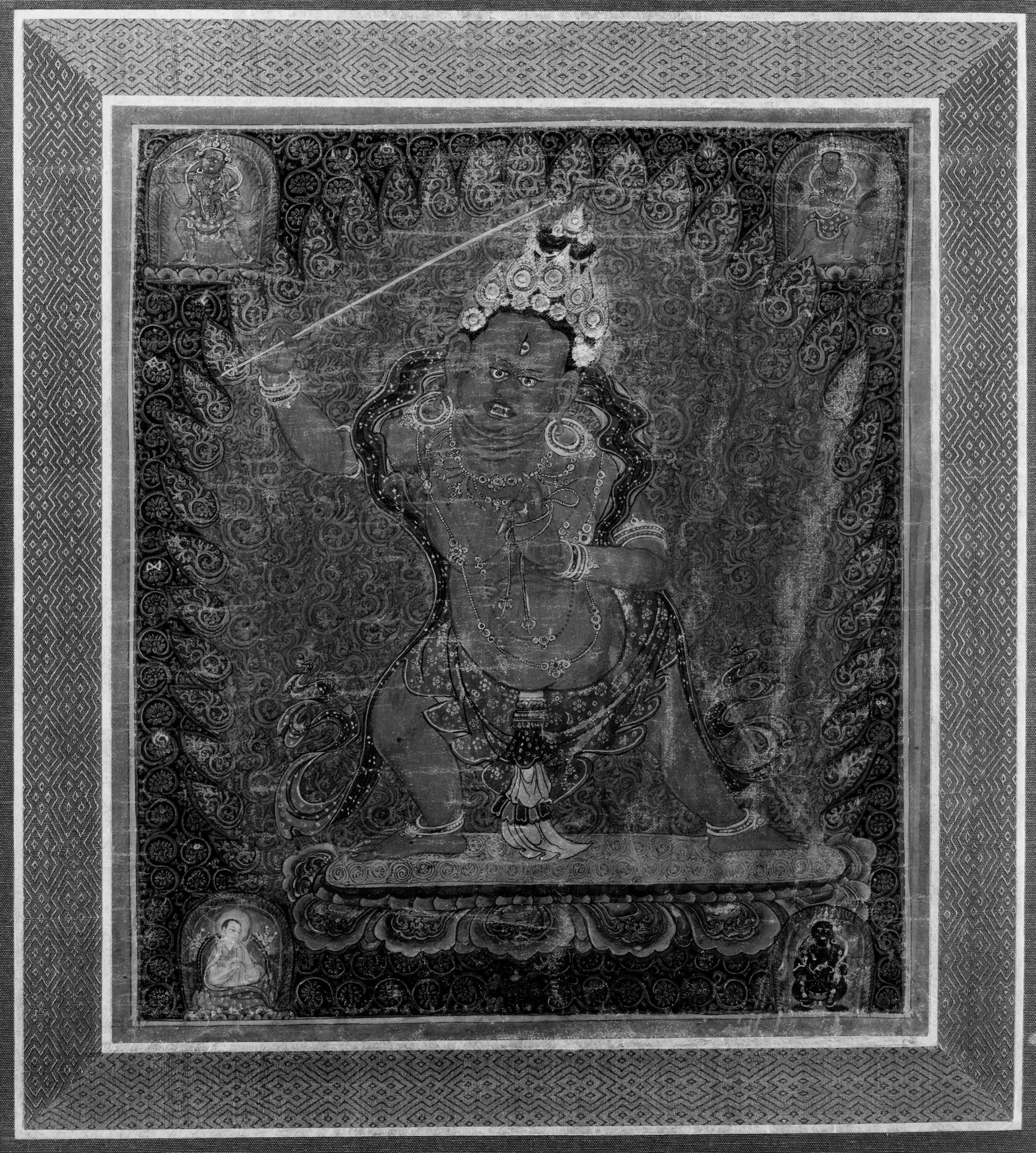Takkiraja
(India, Nepal, and Tibet)
The Buddhist deity Takkiraja lifts an iron hook and holds a lasso to his heart, his index finger raised in a threatening gesture. The tips of both weapons bear the curved prongs of a vajra (the ritual scepter used in tantric Buddhist practices), a reminder that they are used in support of Buddhist goals. With them, Takkiraja overpowers the forces that trap us in the cycle of mundane existence and pulls all beings toward spiritual liberation. The deities in the upper corners of the painting similarly use wrathful means to help free beings from the trappings of ordinary existence. The lower corners feature the protector god Mahakala (right) and a monk, probably the patron of this painting. Scattered throughout the vines of the cool green background are tiny symbols—such as jewels, elephant tusks, and interlocked rings—that allude to the seven precious possessions of the righteous king, and more generally to well-being.
Provenance
Provenance (from the French provenir, 'to come from/forth') is the chronology of the ownership, custody, or location of a historical object. Learn more about provenance at the Walters.
William H. Wolff, New York; John and Berthe Ford, Baltimore; given to Walters Art Museum, 1973.
Exhibitions
| 2016-2017 | Ferocious Beauty: Wrathful Deities from Tibet and Nepal. |
Geographies
Tibet (Place of Origin)
Measurements
Image H: 12 1/4 × W: 10 1/2 in. (31.12 × 26.67 cm); Framed H: 25 1/2 × W: 19 1/2 × D: 1 1/2 in. (64.77 × 49.53 × 3.8 cm)
Credit Line
Gift of John and Berthe Ford, 1973
Location in Museum
Not on view
Accession Number
In libraries, galleries, museums, and archives, an accession number is a unique identifier assigned to each object in the collection.
In libraries, galleries, museums, and archives, an accession number is a unique identifier assigned to each object in the collection.
35.115






